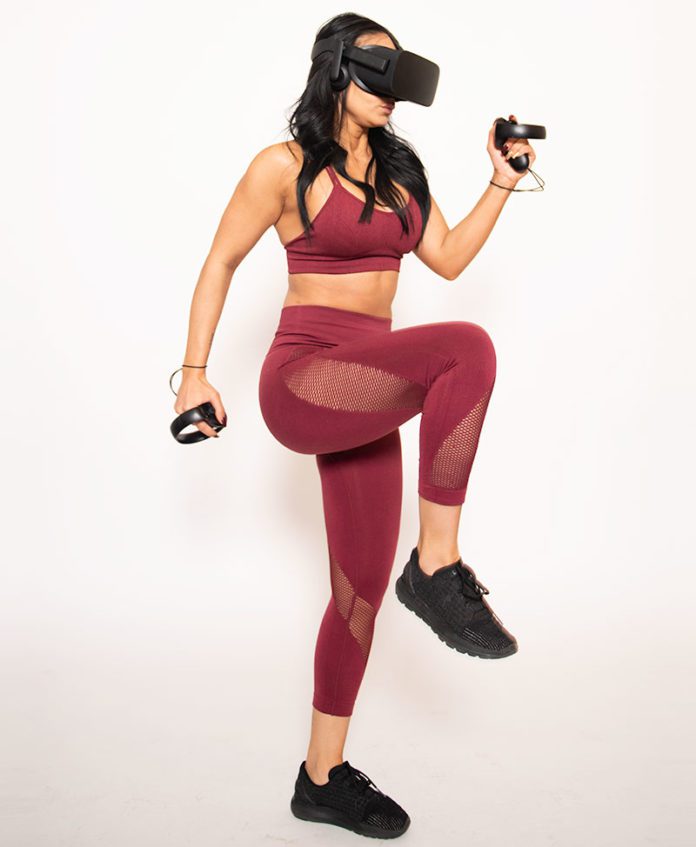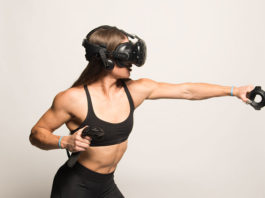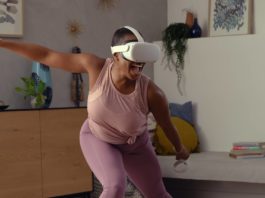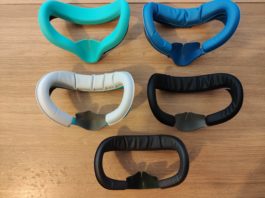Seeing your virtual body is a major contributor to feeling “there”.
While the introduction of the virtual nose didn’t necessarily fix many early VR game development issues, especially regarding motion sickness, the recent trend of devs including virtual bodies on player characters in games like Echo VR and Contractors has been a much different story.
These virtual bodies that you see when you look down and move your arms around in certain games are governed by an animation concept called ‘Inverse Kinematics’, or IK for short. IK bodies are a grounding element in VR game design when implemented smoothly. This is simply because, when you reach out to touch an item, you expect to see your arms and your elbows moving in front of you; IK fulfills that inborn expectation.
IK Drives Immersion
At VR Fitness Insider, one of our review criteria is time perception. We base part of our game review scores off of time perception because VR works much better for fitness when you lose track of time and/or forget that you’re working out. Antithetically, we deem that it is healthy for you to get lost in a good VR game for a longer period of time.
And that’s why it’s important for developers to include things that invoke the most sense of presence. Presence is the immersion factor in VR that sweeps you off of your feet and into the game that you’re playing. IK is a small detail, but an important one for creating a sense of being inside of VR.
IK Makes Combat More Visceral
99% of active VR games use combat in some form or another. If it’s not hacking and slashing, it’s punching and chopping. If it’s not punching and chopping, it’s nocking and shooting.
I think that IK actually makes VR combat more physically engaged than it would be with nothing more than your hands being rendered. Because you naturally respect the form factor of your arms in the real world, no matter what’s happening in VR, your brain is always contending with where your arms are at in reality. When you don’t see them existing as a real part of your body in VR, there’s a disjointedness to the overall experience.
Creed: Rise to Glory is an impactful experience because of its inclusion of IK arms.
Now think of how pivotal IK could be in a true boxing sim like The Thrill of the Fight, where you’re literally raising your arms and blocking hundreds or thousands of punches. Well, you can’t actually see your arms in The Thrill of the Fight, but you know where they are in real life—meanwhile, the game is trying to take its own best guesses as well.
But what if The Thrill of the Fight simply knew where your arms were, and better yet, you could see them inside of the game? That’s what IK wants to do. When (good) IK is implemented, you’re able to wield your entire body instead of a disjointed pair of hands. You’re able to see holes in your own defenses, and thus you’re better able to understand the relationship between yourself and your opponent.
People Are Developing Simple IK Solutions Right Now
IK sounds like it’d be a hassle for developers to put into VR games, especially those without a dedicated art team, but it seems like IK integration into VR is becoming more widespread and more easily attainable.
There are developers who are releasing universal IK scripts that could sweeten the deal for game developers who’d prefer not to write their IK system in-house. Check out this open source IK package for Unity, which looks amazing and appears to be easily ported to other engines such as Unreal.
IK is a valuable component in VR game design for the entire industry moving forward. It specifically benefits active VR games by imbuing a greater sense of self in the player, but it also helps the player read the game environment more accurately, making it more natural to work harder in a game.
What’s your take on IK in VR? Let us know in the comments.




